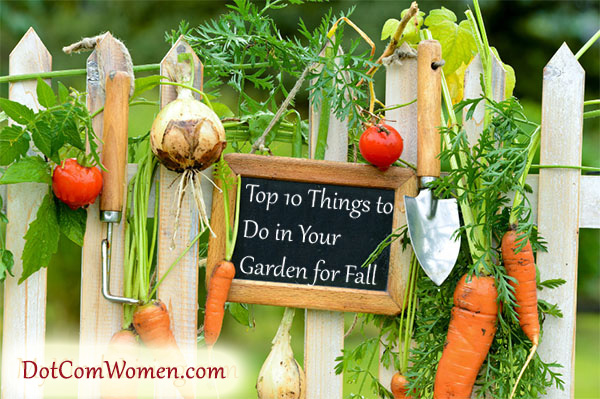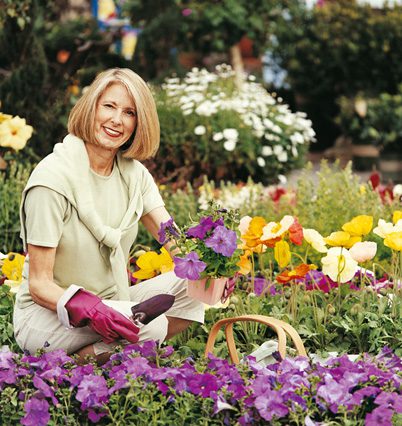Top 10 Things to Do in Your Garden for Fall
The Autumn Garden
The leaves may be turning, but it’s no time to turn your back on your garden! Autumn is a time of abundance, maintenance, and a time to plan ahead. Check out our list of top 10 things to do in your garden during fall.

10. Pansy Perfection
Nothing wrong with being a pansy this fall! These flowers love the cool weather. Fertilizer.com recommends planting them at the same depth that they grew in their containers. If you plant them too deep, they’re susceptible to disease. And, look for a time-released fertilizer that contains a high percentage of nitrate nitrogen. Be sure to mix this into well-tilled soil, along with other organic matter.
9. A Fall Clean-up
After you plant your last tulip bulb this fall, retire your garden tools until next spring. Use fine sandpaper to clean rust off hand tools, and apply a light coat of oil to all metal parts. Be sure to drain the oil from the gas tank in your lawn mover, and completely drain the garden hose as well (water can freeze in cold weather and break your hose).
8. The Importance of Mulching
Mulch much? You should! A layer of mulch three to four inches deep should be placed around your plants all year long. This is especially beneficial as weather turns cooler, to help insulate the root zone. Use a fine-textured mulch (such as compost) on hardy annuals, like pansies or violas; and coarser mulch (shredded hardwood) on trees and shrubs.
7. A is for Apple
Autumn is an ideal time to enjoy apples. Try something different this season and make apple butter. It’s easy and delicious, especially smothered over a hot scone! The best cooking apples are Granny Smith, Gravenstein, and Golden Delicioius. Visit our link for a tasty recipe.
6. Plant Bulbs
Start planning now for a glorious spring garden. Plant bulbs as soon as the ground turns cool (somewhere between September and December, or at least six weeks before the ground freezes). Place them in soil that drains well–big bulbs should be planted about eight inches deep, while small bulbs should be about five inches.
5. Seeding Suggestions
Here’s a cool tip: if the weather is too warm for fall gardening, allow your seeds to germinate indoors in a cool spot. Start them off in small containers with good drainage (peat pots work well, but soak them first before adding soil). And, to retain an even amount of humidity and moisture, seal the pots in plastic bags (it’ll also reduce watering time).
4. Growing Autumn Vegetables
Growing gourds in your backyard? Come autumn, they’re ripe for the picking! If you’re growing winter squash, pick them after their rinds have hardened (unlike summer squash, which is best while they’re still tender). Their skin should be too tough to puncture with your fingernail.
3. Composting
What to do with all those fallen leaves and grass clippings? Compost them! According to composters.com, the proper ratio should be two to three parts brown, to one part green. Greens (grass, veggie scraps) are rich in nitrogen, while browns (dried leaves and twigs) supply the carbon. And remember to layer, layer, layer!
2. The Herb Garden
Gourmands listen up! The arrival of autumn doesn’t have to mean the end of growing fresh herbs. They’ll thrive indoors. Herbs that adapt best to living inside are parsley, rosemary, mint and thyme. Pallensmith.com recommends placing them in a spot where they’ll receive at least six hours of sunlight, and to fertilize them once a month.
1. Lawn Care
Seeds germinate well during cool weather so it’s the perfect weather for renewing your lawn. Overseed your grass two to four weeks before the first frost. Choose perennial or annual rye–it’s the top choice for reseeding. Water it regularly, and apply a fertilizer two weeks after planting. Invest in a quality watering system, such as these Gilmour lawn sprinklers, to water your lawn regularly, and apply a fertilizer two weeks after planting

